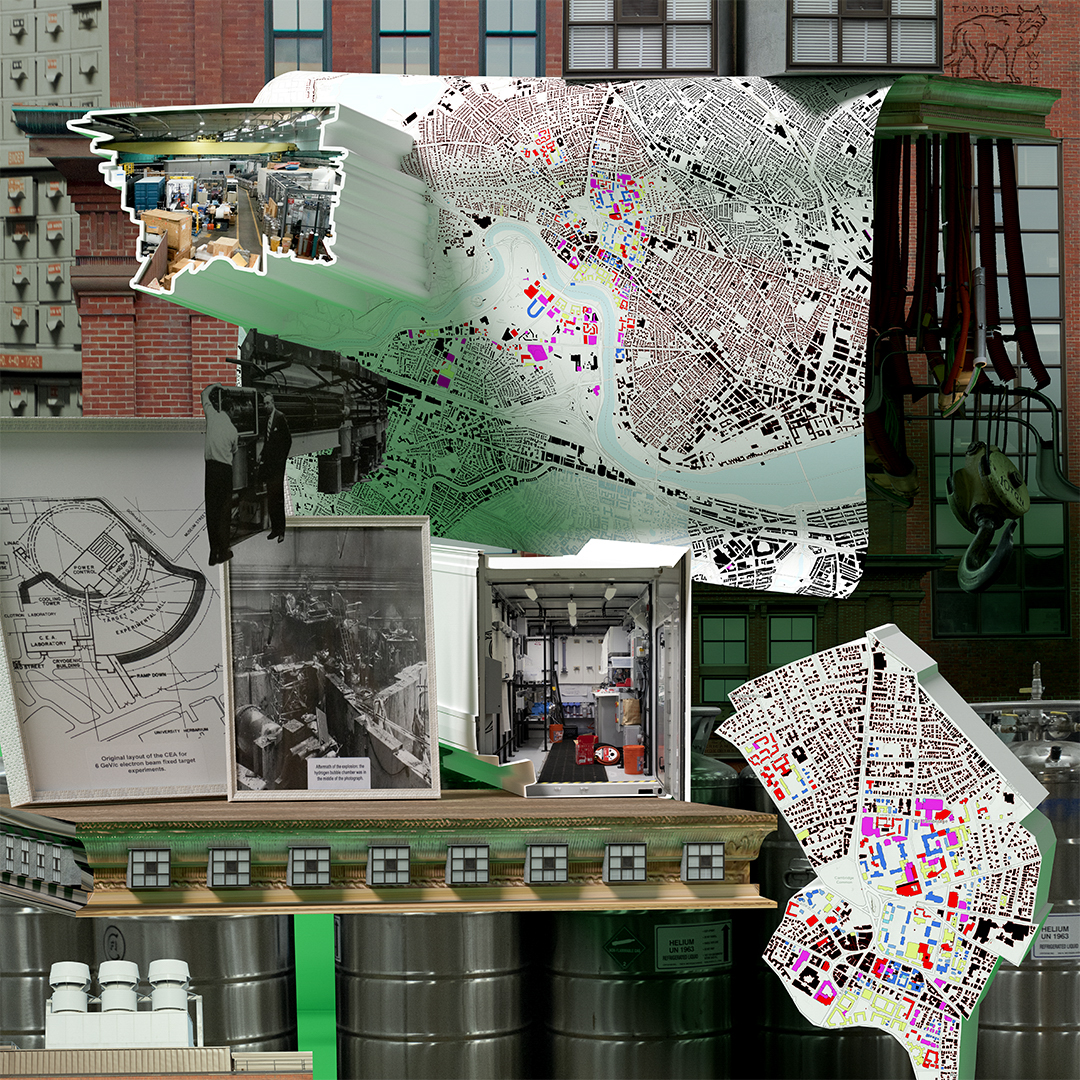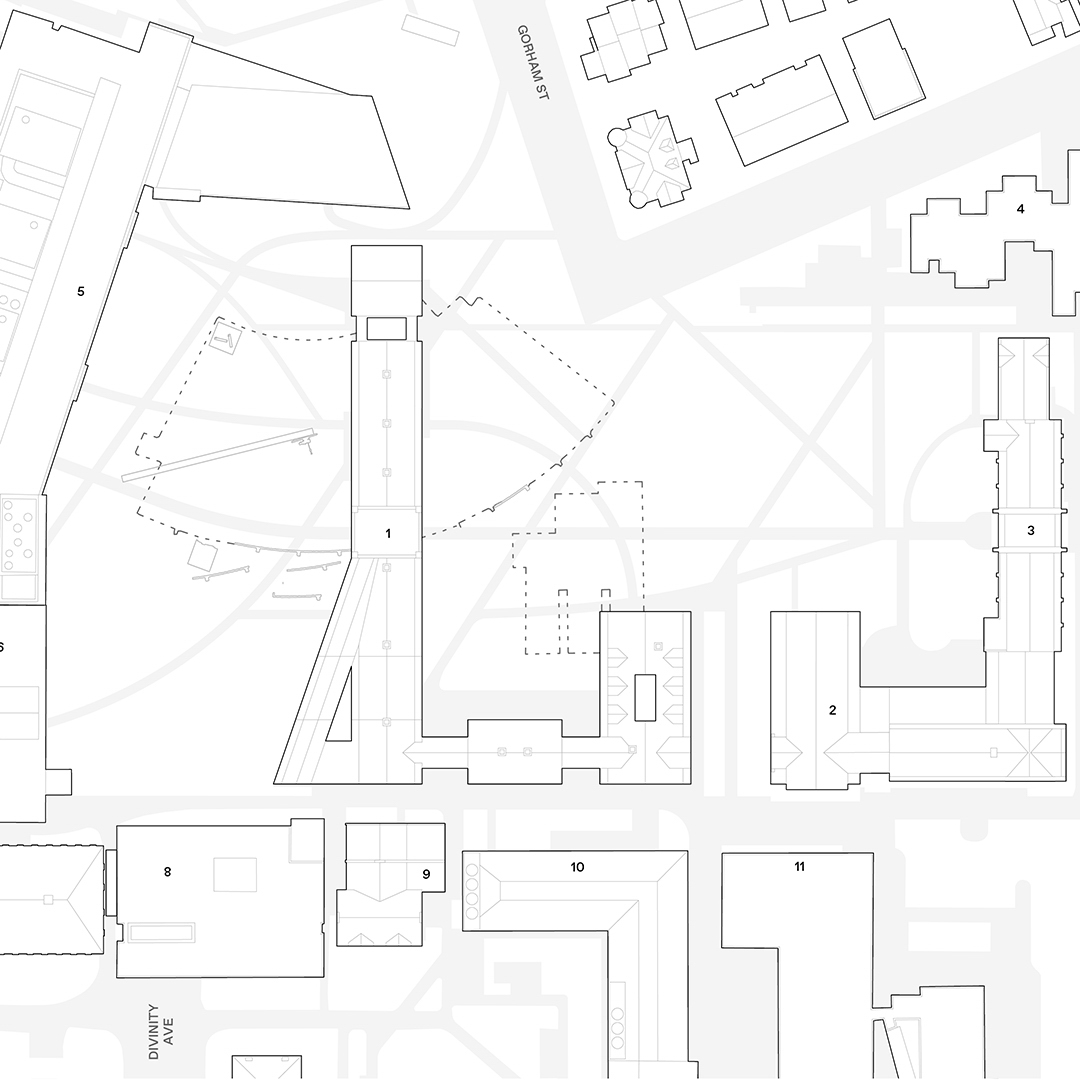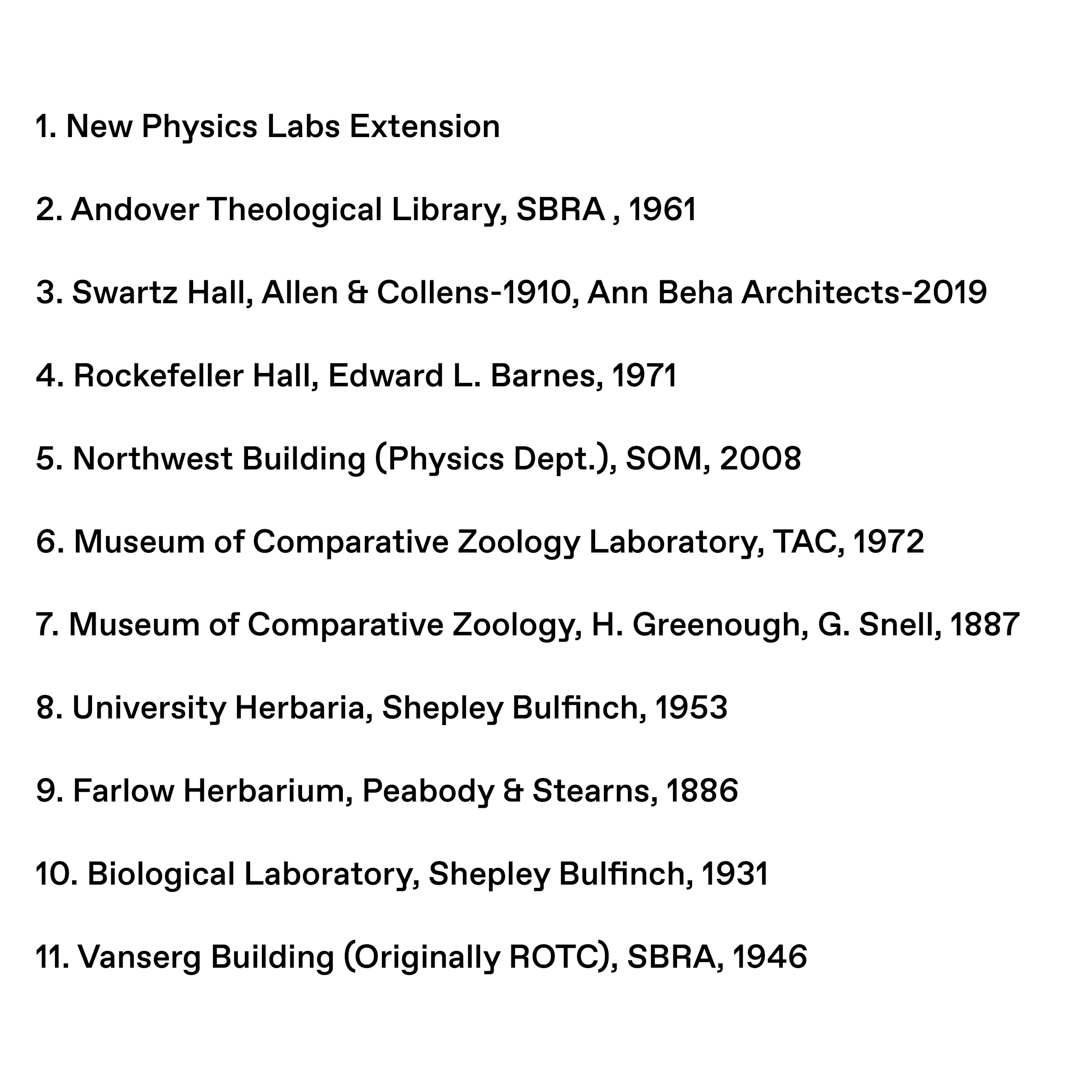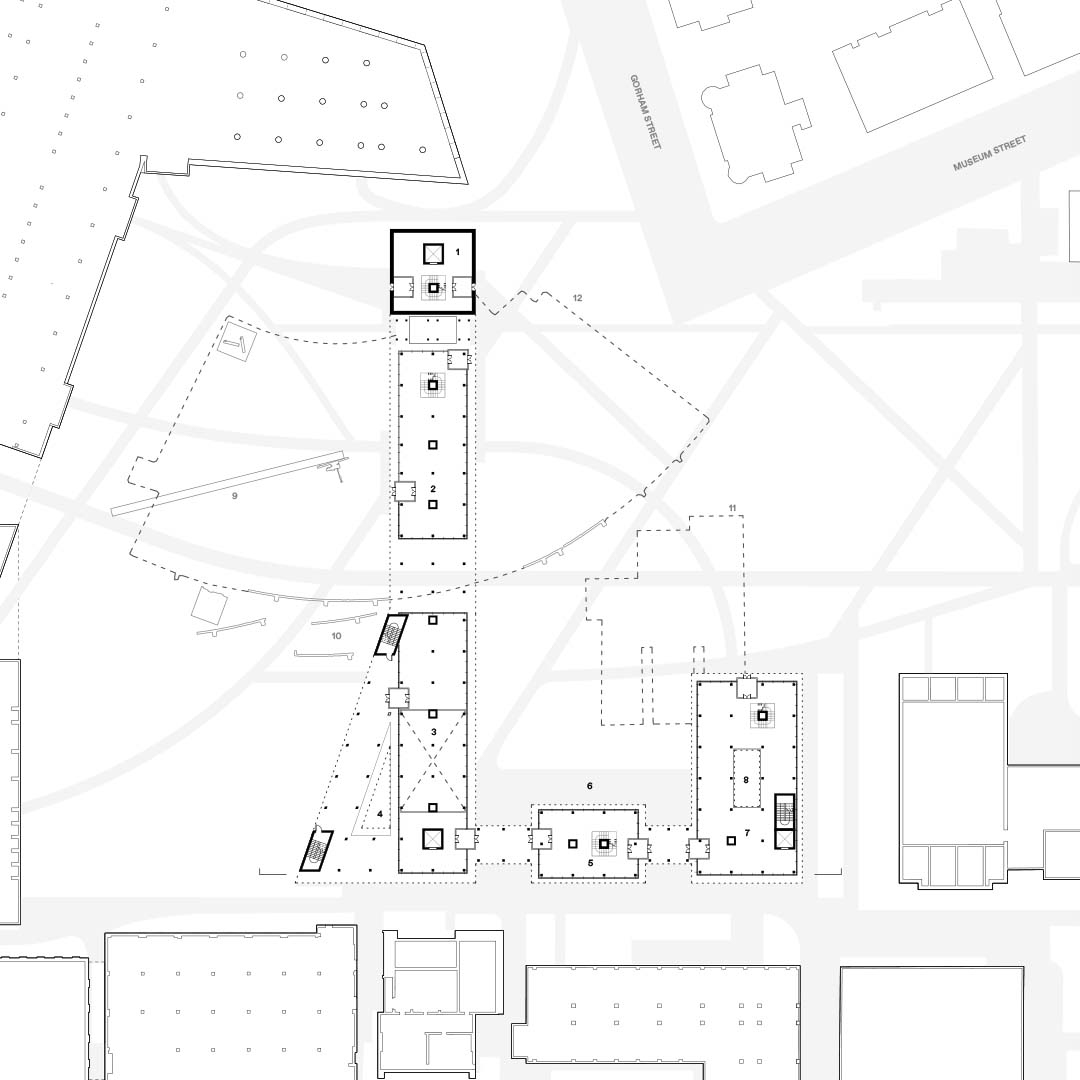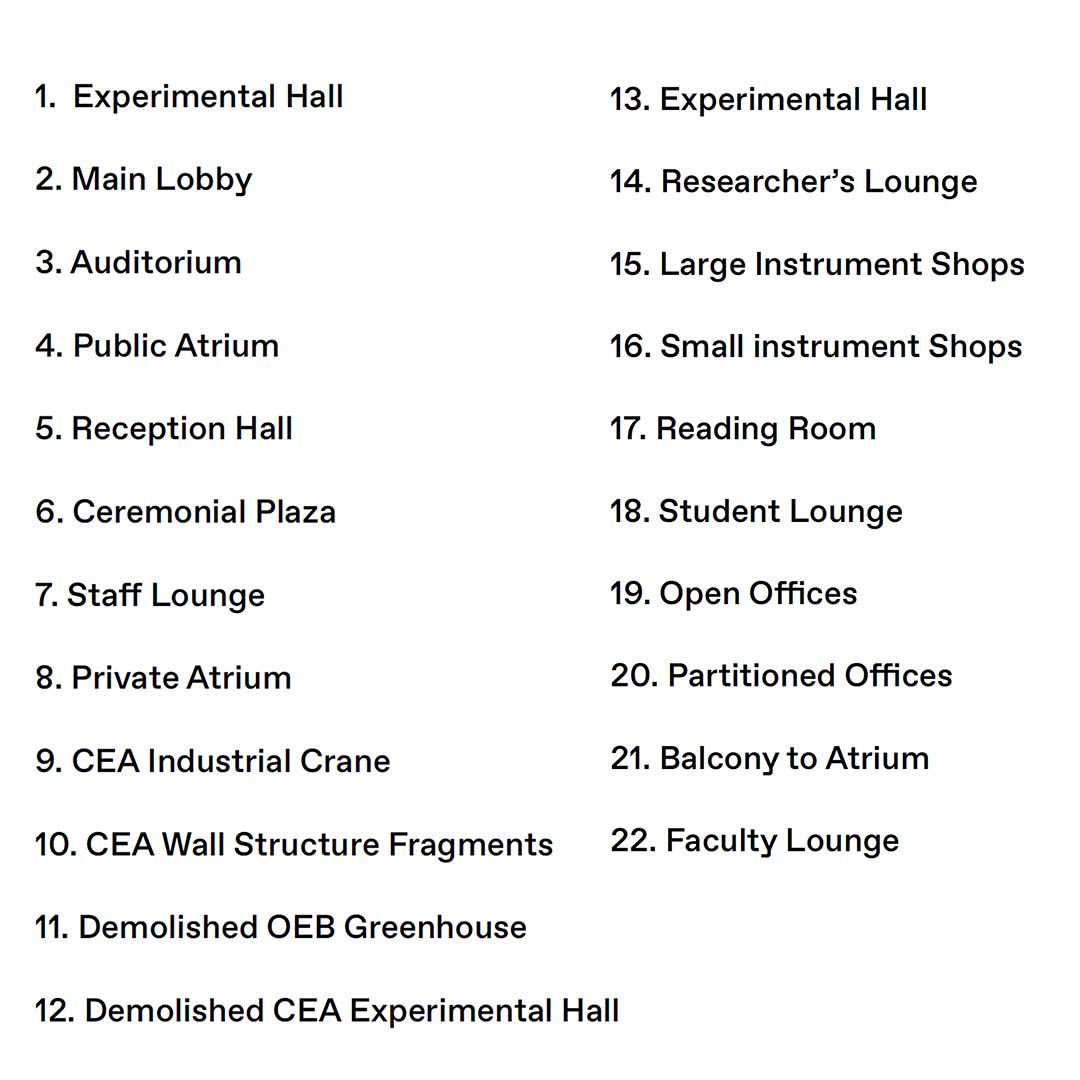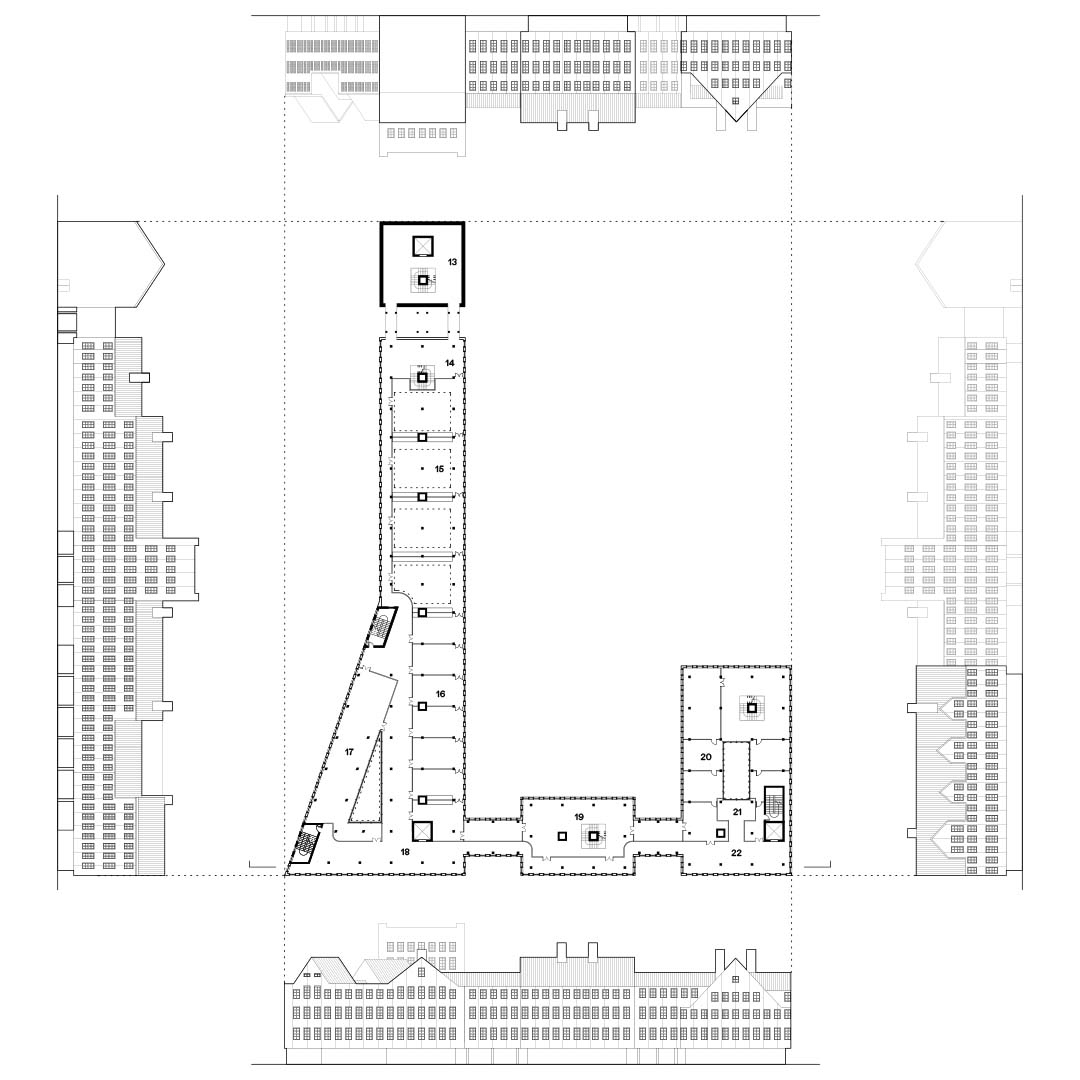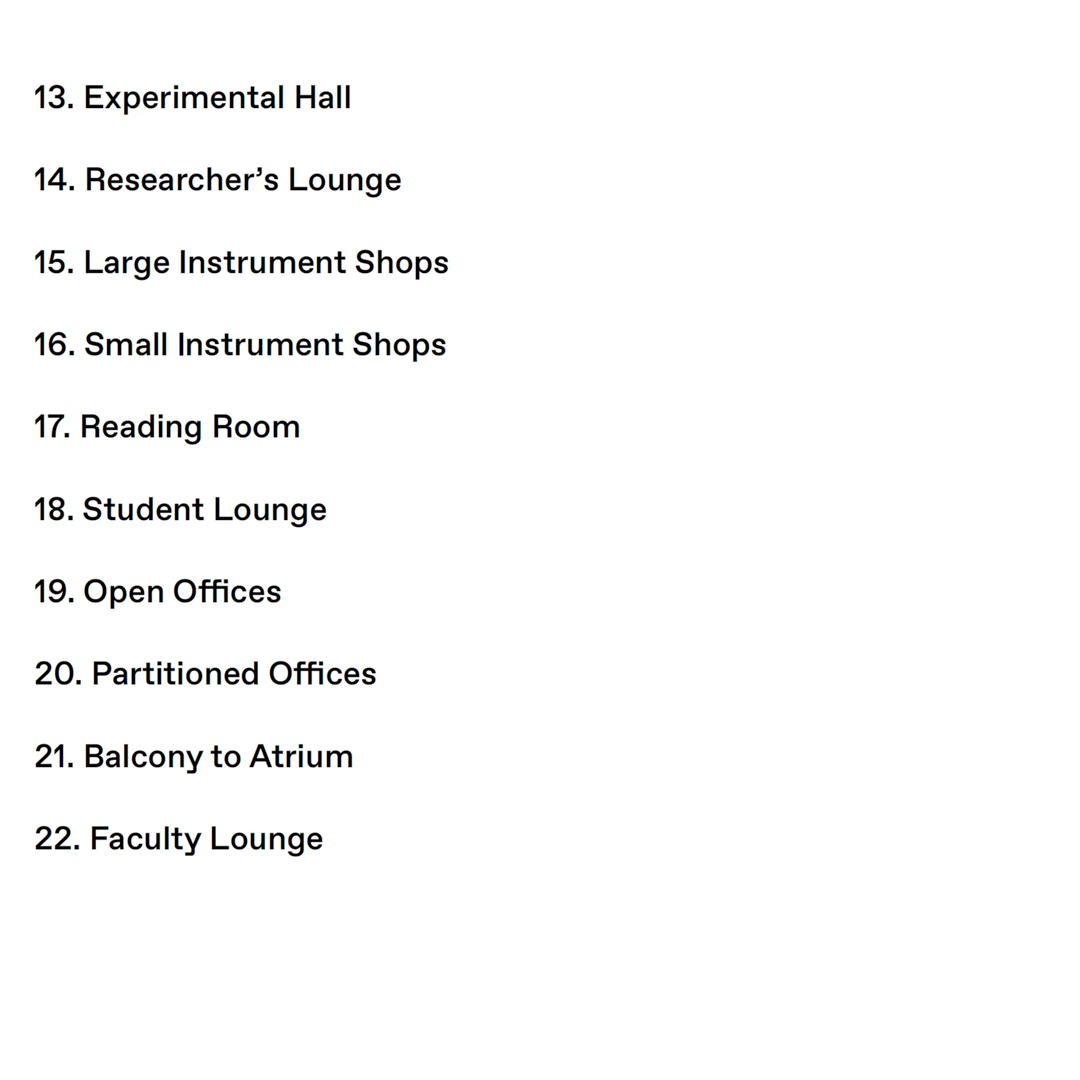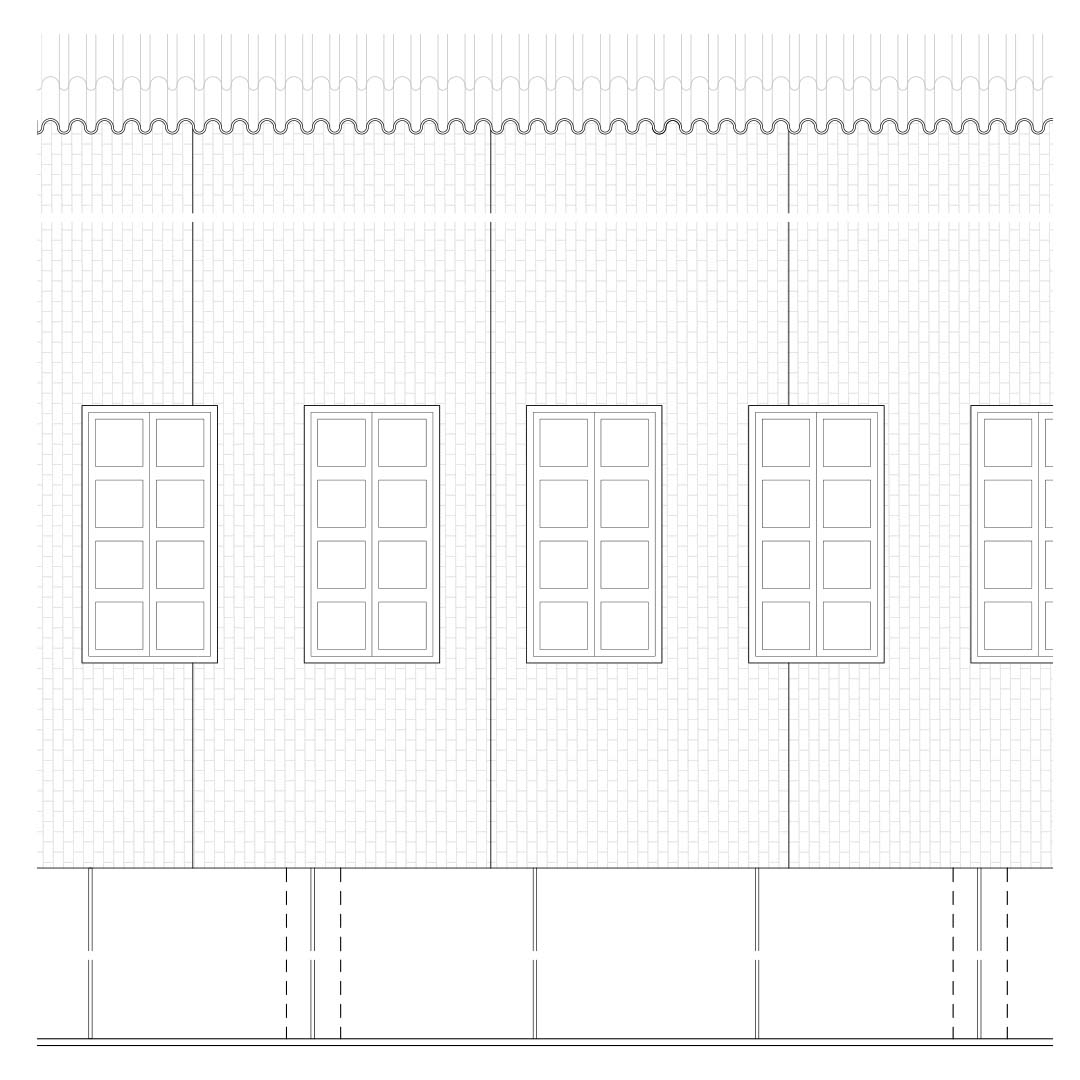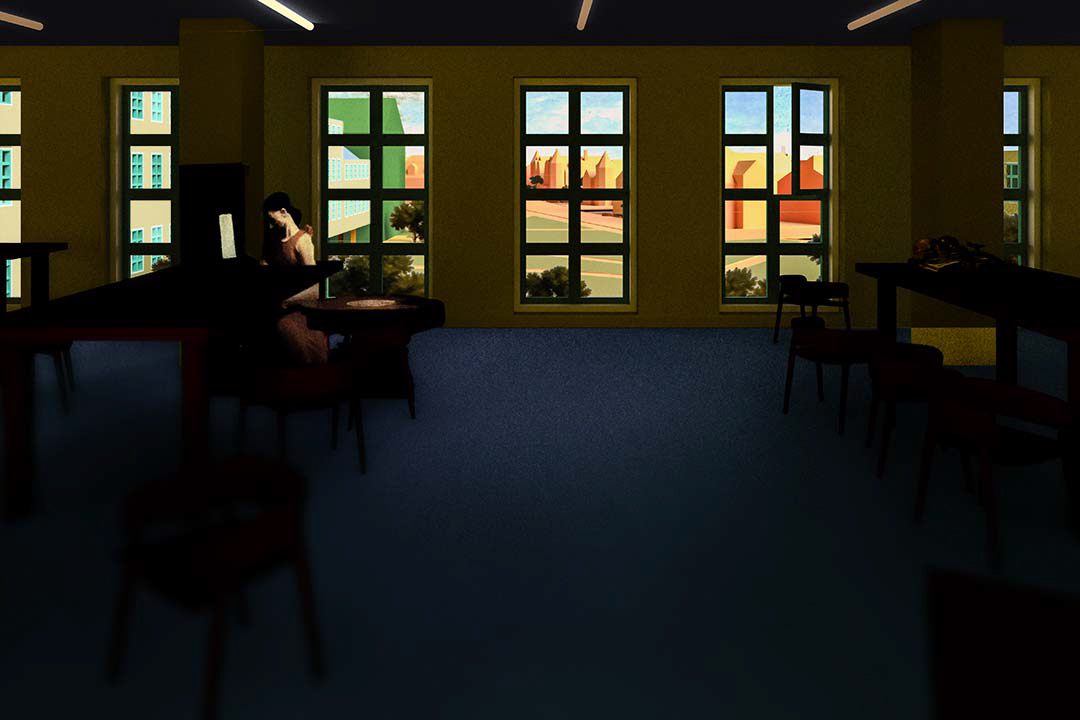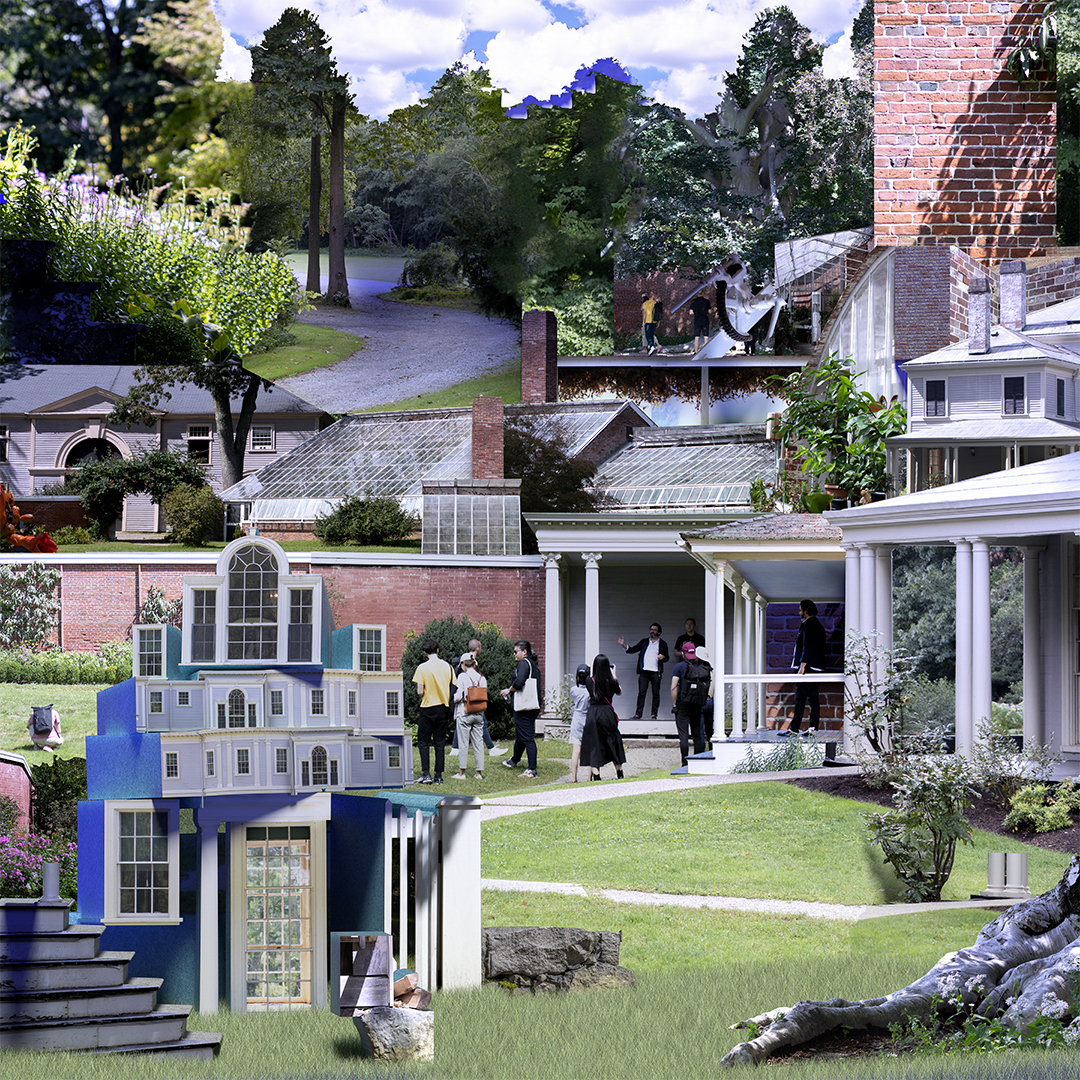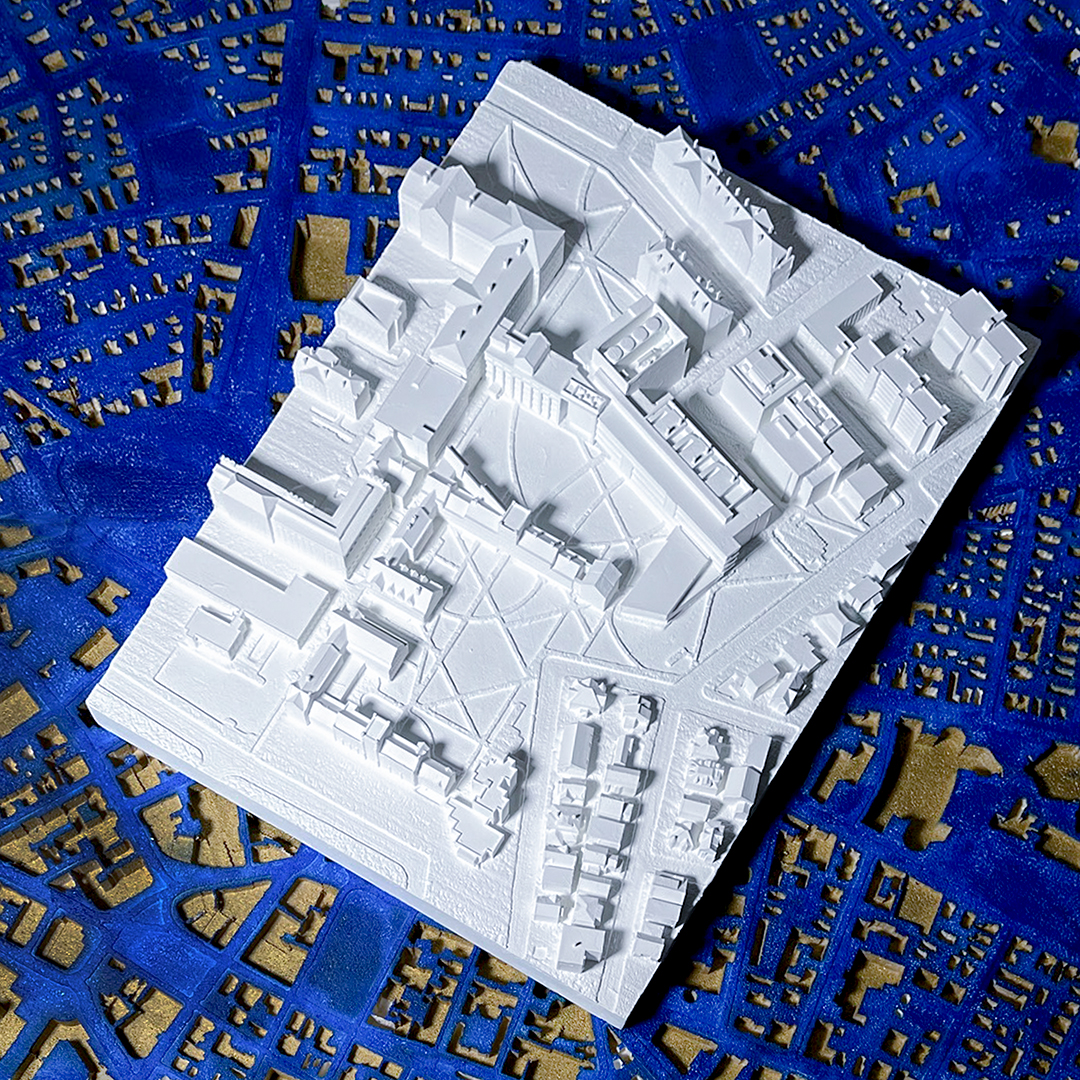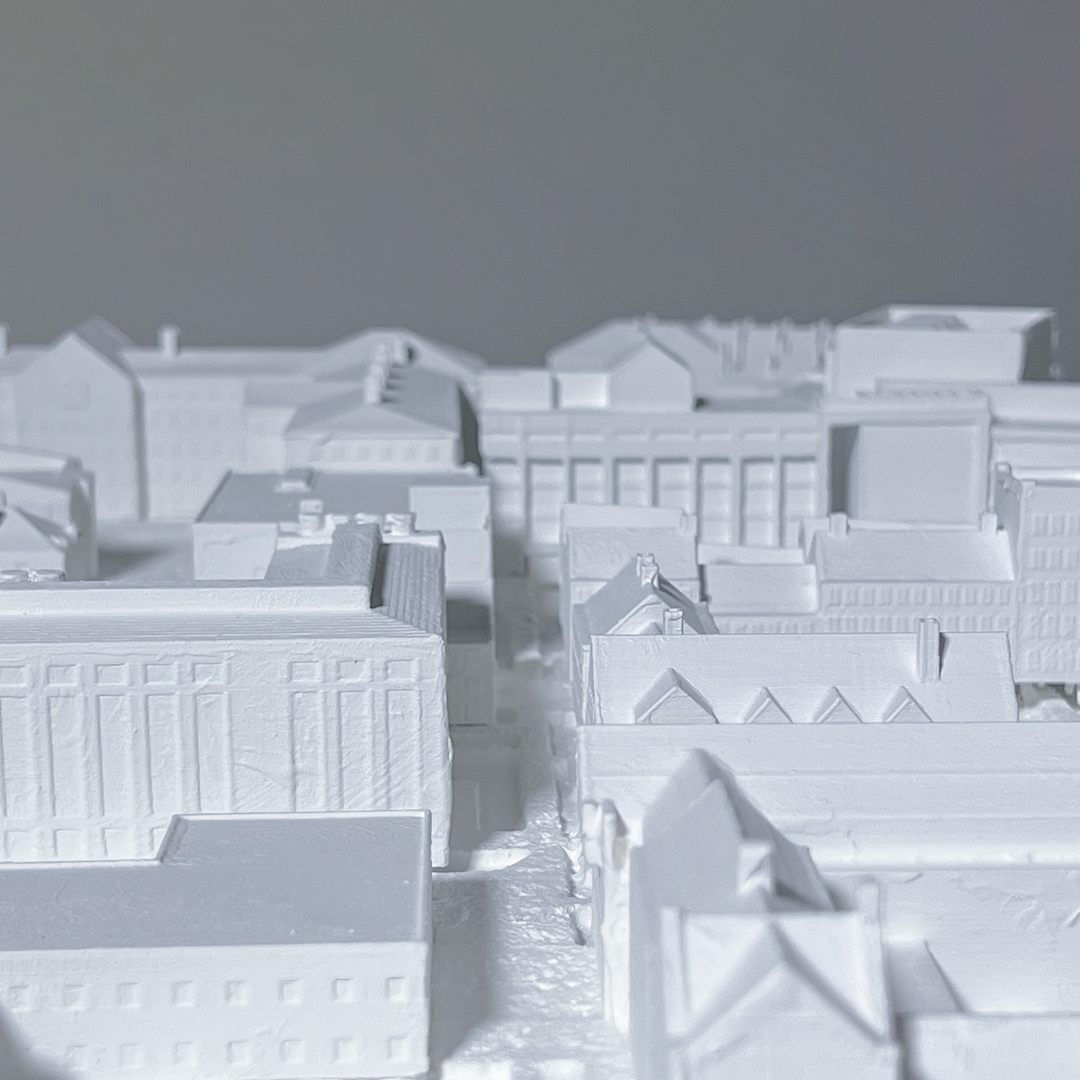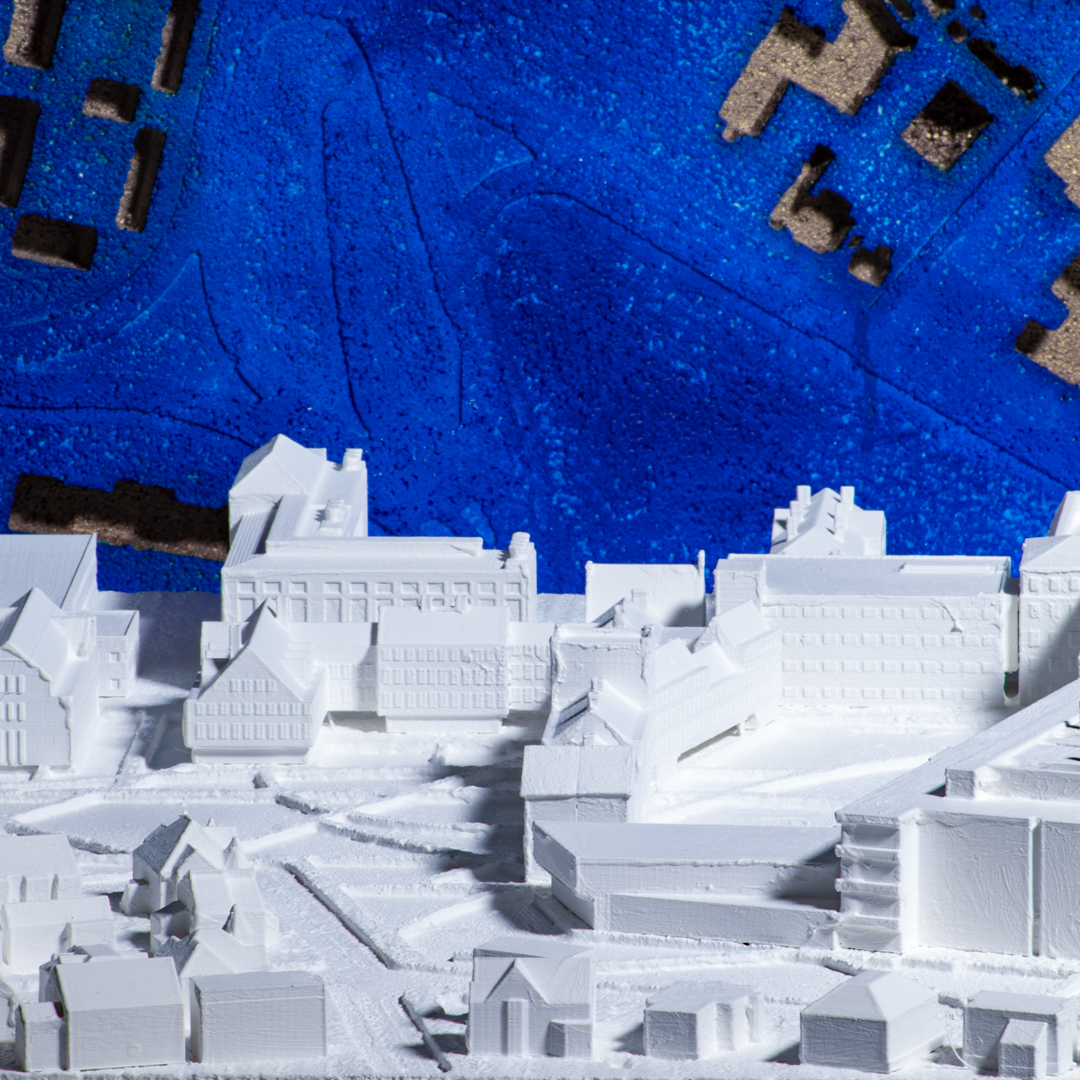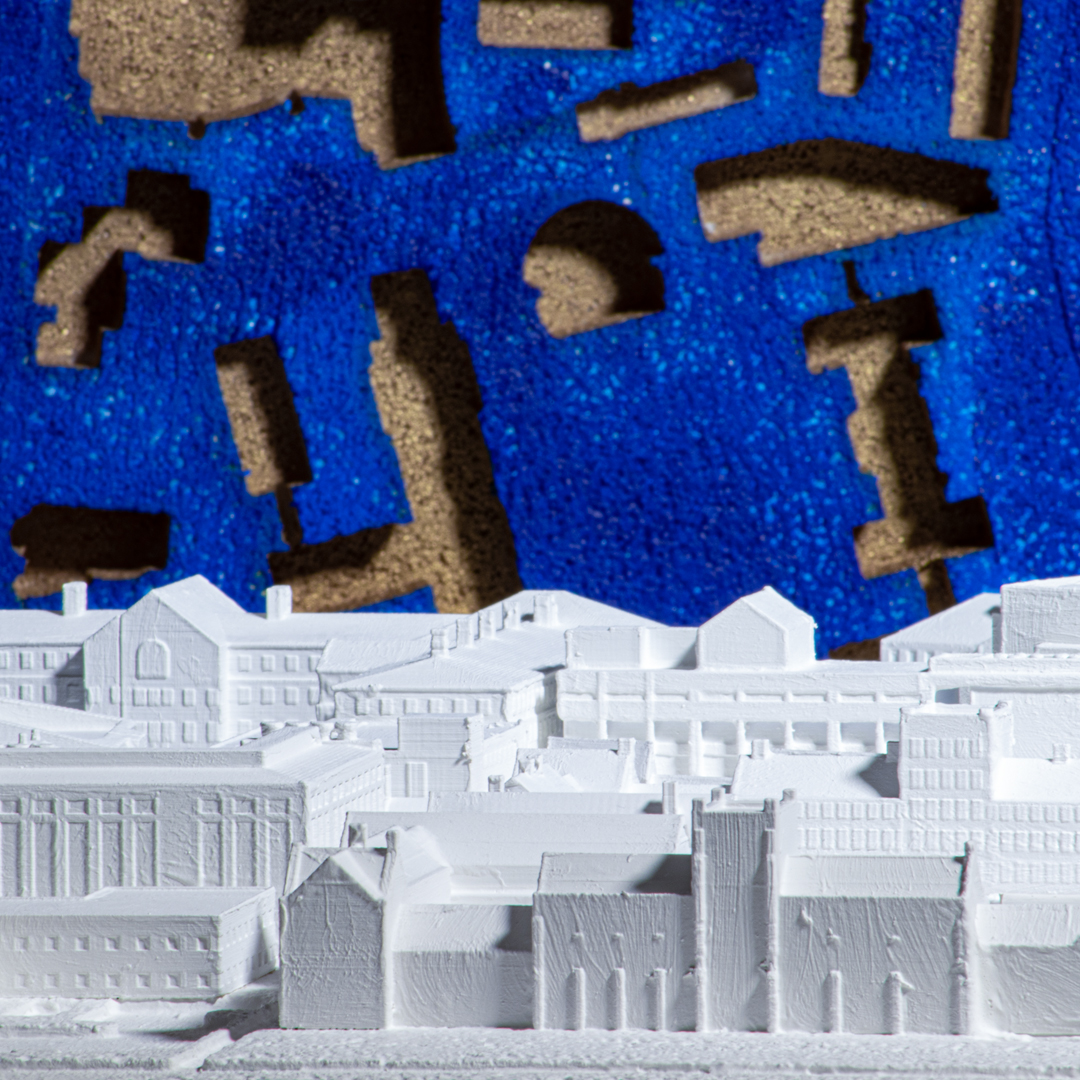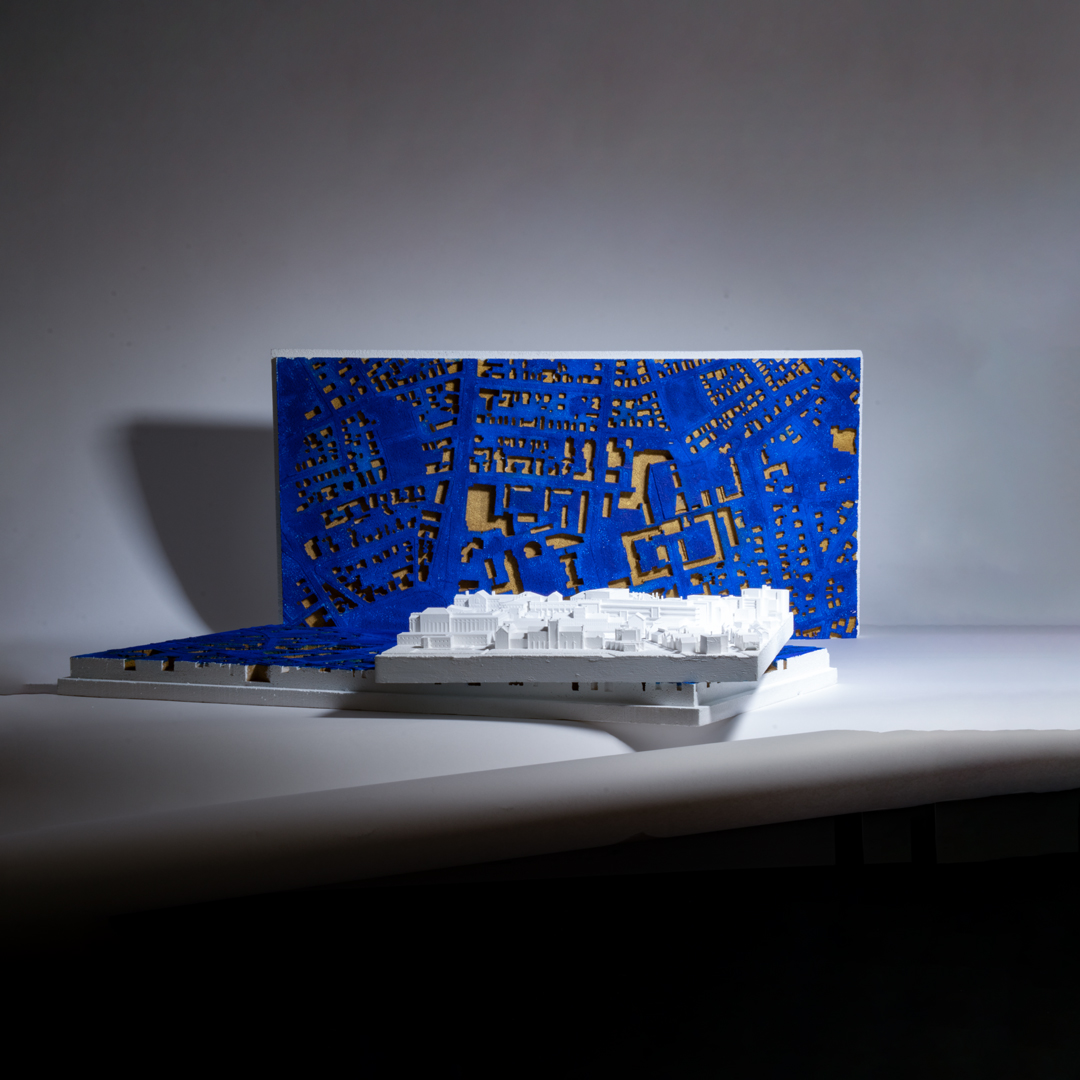The Physics Lab Extension
A Wall for Two Courts
A Research Facility on University Campus
Beauty of Knowledge: American Irregularity
Instructor: Éric Lapierre
Fall 2021, GSD
Introduction
The Extension follows the demolition of 38 Oxford Street Cambridge Electron Accelerator (CEA) on Harvard University campus. Materials resulting from the demolition will be reconfigured as artifacts of knowledge in the "Garden of Ruins".
Site
The Experimental Hall is all that remains of the CEA today. It was part of a 6 billion electron volt ‘synchrotron’, conjointly run by Harvard and MIT in the 1960s.
On July 5th 1965, the high-energy accelerator caught on fire and exploded due to a bubble chamber failure. The building is now utilized as a storage room. The industrial crane inside is useful for moving large-scale objects and permanent-temporary office spaces.
History of the Program
By the 1980s, nuclear physicists faced a crisis where workspace and work itself were delaminated: research and experiment. They realized that looking at beam characteristics or particle production on a monitor located at CERN is no more “direct” nor “closer” to the phenomena of the experiment.
Peter Galison and Caroline Jones write, “[...] if the control rooms are multiple and the data are in play across the world, it is no longer clear where the experiment can be said to be.”
The emergence of such spatial dislocation redefined factories, studios, and laboratories in the late 20th century and highlighted CEA’s presence on campus as irrational. It currently occupies the key site between the Northwest Building (Physics Dept.), Museum of Comparative Zoology Laboratory, University Herbarium, Biological Laboratories, and Andover Theological Library.
Method
The demolition paired with a proper burial revives the symbolic life of the CEA structure. The proposed "Garden of Ruins" salvages the materials of the experimental hall and transforms them into objects of memory. Posed as landscape furniture and sculpture in the field, the fragments of the past are readily discoverable from the ground.
